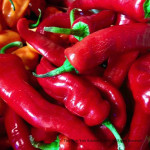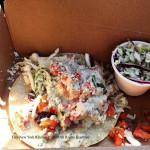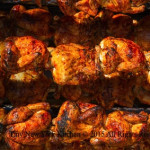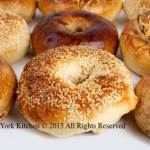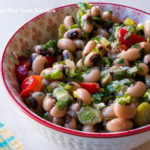This afternoon I stopped for ice cream in Vineyard Haven. This delicious flavor is Almond Joy! Mouth Heaven!
It’s a wonderful Friday here on Martha’s Vineyard. The weather is in the 70’s and the sky is clear. I can’t think of a better way to spend a Friday.
The Vineyard Open Land Foundation maintains an organic cranberry bog in the hills of Lambert’s Cove. The bog is a rarity because only about 1 percent of the U.S. and Canada’s cranberries are grown organically. Old wooden machines are still used to harvest, winnow, and sort the berries.
“Work With What You Got!”
© Victoria Hart Glavin Tiny New York Kitchen © 2015 All Rights Reserved
One of my favorite places to go for lunch, on the way to Martha’s Vineyard, is Quick’s Hole in Woods Hole, Massachusetts. I always order the lobster tacos. Messy, but ten minutes of heaven.
“Work With What You Got!”
© Victoria Hart Glavin Tiny New York Kitchen © 2015 All Rights Reserved
You are the sum total of everything you’ve ever seen, heard, eaten, smelled, been told, forgot – it’s all there. -Maya Angelou
“Work With What You Got!”
© Victoria Hart Glavin Tiny New York Kitchen © 2015 All Rights Reserved
America was not built on fear. America was built on courage, on imagination and an unbeatable determination to do the job at hand. – Harry S Truman
Ways To Use Your Roasted Chicken
Summer is over, the kids are back in school, and it’s back to busy life as usual. Already cooked chicken is a perfect way to save time in the kitchen. Here are some great ways to use roasted chicken for easy weeknight dinners.
Salads: Add to mixed greens, chopped tomatoes, chopped cucumbers, shredded carrots, and sliced red onions. Toss with your favorite low-fat or fat-free dressing.
Lettuce Wraps: Add 2 cups of chopped chicken to shredded carrots, green onions, and bean sprouts. Toss with teriyaki sauce. Spoon onto lettuce leaves and sprinkle with almonds. Fold sides of lettuce over filling and roll up.
Sandwiches & Wraps: Make a chicken salad filling with crunchy celery and apples. Use plain low-fat yogurt and add a touch of curry powder or cumin for dressing. Stuff into a pita pocket or spoon into a wrap and roll up.
Soups: Add 2 cups chopped chicken, your favorite chopped vegetables and 1 cup of uncooked rice or noodles to 6 cups of fat-free chicken broth.
Quesadillas: Combine shredded chicken with a pinch of cumin. Spoon on one half of a flour tortilla. Sprinkle with cheese and fold tortilla in half. Cook on a nonstick skillet for 3 minutes on both sides.
Burritos, Enchiladas, Fajitas & Tacos: Add shredded chicken to salsa, beans, sour cream and cheese. Or combine with sautéed onions & sweet peppers, shredded lettuce & chopped tomatoes, or mix with green chiles, spices, green onions and enchilada sauce. Serve on flour or corn tortillas.
Pasta Dishes: Use shredded chicken instead of ground beef in your favorite lasagna recipe.
Skillet Meals: Add 1 1/2 cups of chopped chicken to sautéed onions, broccoli, mushrooms, and rice. Cook in low-fat broth. Sprinkle on Parmesan cheese before serving.
“Work With What You Got!”
© Victoria Hart Glavin Tiny New York Kitchen © 2015 All Rights Reserved
Who doesn’t love a good bagel? Suddenly, the Upper West Side has become a magnet for baked goods. The first branch of Orwashers, the Upper East Side bakery that turns 100 next year, will open in December in a space where it will bake on the premises. Not counting a kiosk in Bryant Park, Breads Bakery will open its second store in October, this one near Lincoln Center. And the H & H Bagels name will return to the neighborhood this winter. The new bakery is a branch of H & H Midtown Bagels East, the spinoff from the original, which was on Broadway. Now there’s a reason to move back to the West Side!
Orwashers: 440 Amsterdam Avenue
Breads Bakery: 1890 Broadway
H & H Midtown Bagels East: 526 Columbus Avenue
“Work With What You Got!”
© Victoria Hart Glavin Tiny New York Kitchen © 2015 All Rights Reserved
Labor Day History
New York, New Jersey and Colorado were among the first states to approve state legal holidays. In response to support for a national holiday, Sen. James Henderson Kyle of South Dakota introduced a bill to make Labor Day a legal holiday on the first Monday of September each year. It was approved June 28, 1894.
Labor Day, the first Monday in September, is a creation of the labor movement and is dedicated to the social and economic achievements of American workers. It celebrates a yearly national tribute to the contributions workers have made to the strength and prosperity of the United States of America.
Through the years the nation have given increasing emphasis to Labor Day. The first governmental recognition came through municipal ordinances passed during 1885 and 1886. From these, a movement developed to secure state legislation. The first state bill was introduced into the New York legislature, but the first to become law was passed by Oregon on February 21, 1887. During that year four more states (Colorado, Massachusetts, New Jersey, and New York) created the Labor Day holiday by legislative enactment. By the end of the decade Connecticut, Nebraska, and Pennsylvania had followed suit. By 1894, twenty-three other states had adopted the holiday in honor of workers. On June 28th of that year, Congressed passed an act making the first Monday in September of each year a legal holiday in the District of Columbia and the territories.
More than 100 years after the first Labor Day observance, there is still some doubt as to who first proposed Labor Day. Some records indicate that Peter J. McGuire, general secretary of the Brotherhood of Carpenters and Joiners and a cofounder of the American Federation of Labor, was first in suggesting a day to honor those “who from rude nature have delved and carved all the grandeur we behold.” But, Peter McGuire’s place in Labor Day history has not gone unchallenged. Many believe that Mathew Maguire, a machinist, founded the holiday. Recent research seems to support the contention that Mathew Maguire, later the secretary of Local 344 of the International Association of Machinists in Patterson, New Jersey, proposed the holiday in 1882 while serving as secretary of the Central Labor Union in New York. What is clear, however, is that the Central Labor Union adapted a Labor Day proposal and appointed a committee to plan a demonstration and picnic.
The first Labor Day holiday was celebrated on Tuesday, September 5, 1882, in New York City, in accordance with the plans of the Central Labor Union. The Central Labor Union held its second Labor Day holiday just a year later, on September 5, 1883.
In 1884 the first Monday in September was selected as the holiday, as originally proposed, and the Central Labor Union urged similar organizations in other cities to follow the example of New York and celebrate a “workingmen’s holiday” on that date. The idea spread with the growth of labor organizations, and in 1885 Labor Day was celebrated in many individual centers of the country.
The form that the observance and celebration of Labor Day should take was outlined in the first proposal of the holiday, which was a street parade to exhibit to the public “the strength and espirit de corps of the trade and labor organizations” of the community, followed by a festival for the recreation and amusement of the workers and their families. This became the pattern for the celebrations of Labor Day. Speeches by prominent men and women were introduced later, as more emphasis was placed upon the economic and civic significance of the holiday. Still later, by a resolution of the American Federation of Labor convention of 1909, the Sunday preceding Labor Day was adopted as Labor Sunday and dedicated to the spiritual and educational aspects of the labor movement.
The character of the Labor Day celebration has undergone a change in recent years, especially in large industrial centers where mass displays and huge parades have proven to be a problem. This change, however, is more a shift in emphasis and medium of expression. Labor Day addresses by leading union officials, industrialists, educators, clerics, and government officials are given wide coverage in newspapers, radio, and television.
The vital force of labor added materially to the highest standard of living and the greatest production the world has ever known and has brought us closer to the realization of our traditional ideals of economic and political democracy. It is appropriate, therefore, that the nation pay tribute on Labor Day to the creator of so much of the nation’s strength, freedom, and leadership – The American Worker!
“Work With What You Got!”
© Victoria Hart Glavin Tiny New York Kitchen © 2015 All Rights Reserved



